AHA 2021: Late-breaking Science Video Collection
Published: 12 November 2021
-
Views:
 4053
4053
-
Likes:
 7
7
-
Views:
 4053
4053
-
Likes:
 7
7
-
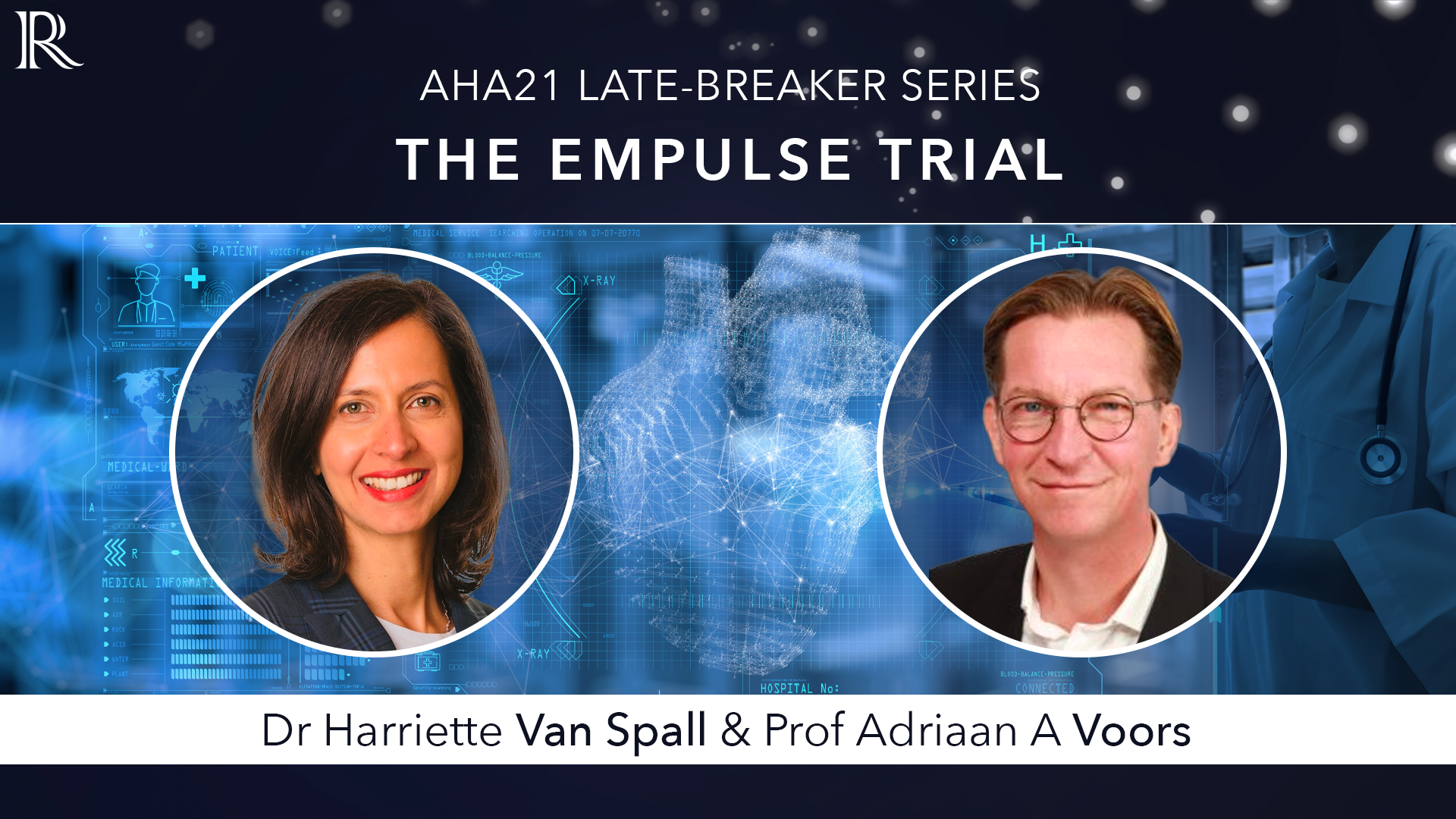 Up Next
Up Next -
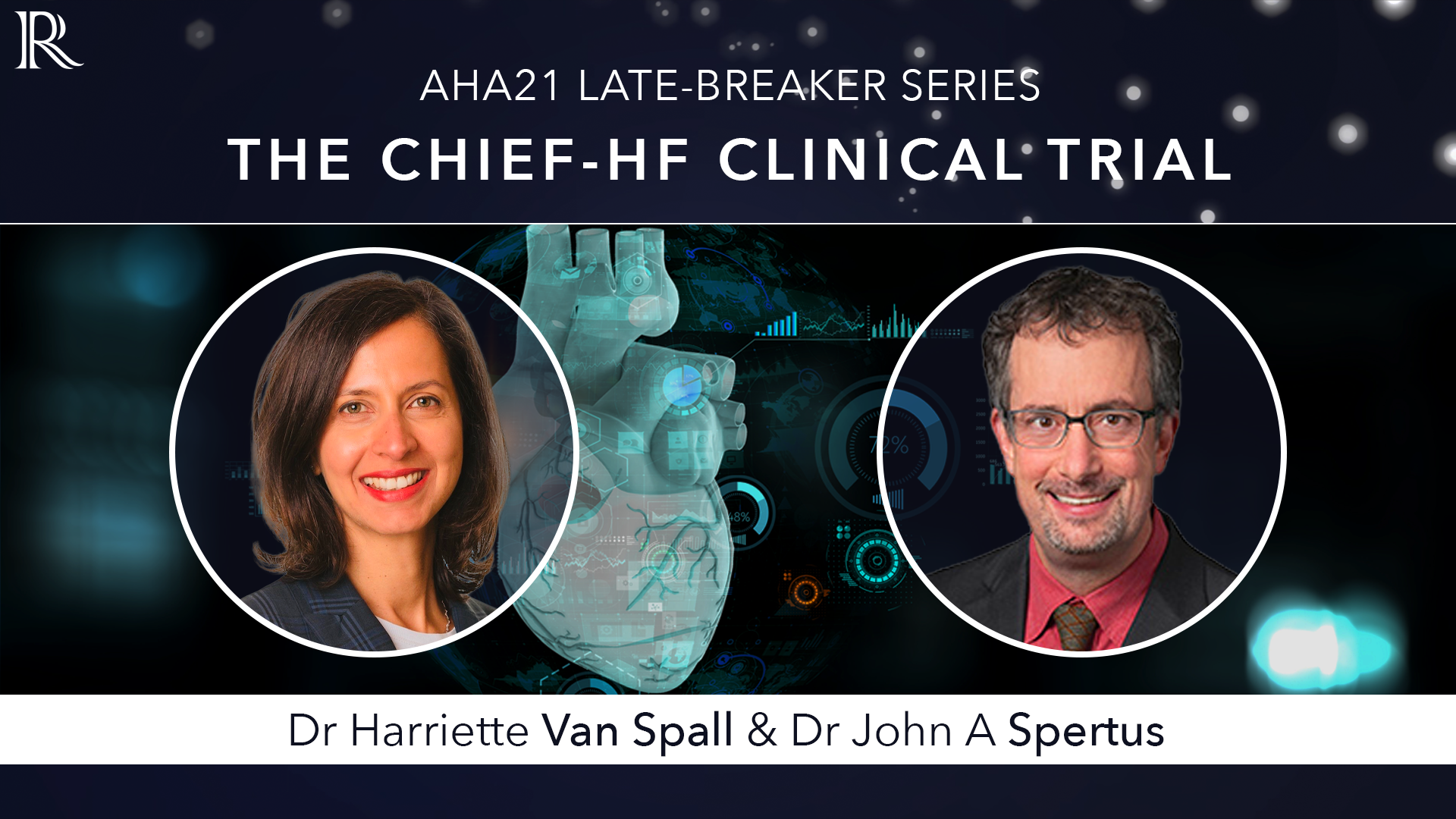 16m 2sPart 1 | Session 2 AHA 21 Late-breaker Discussion: The CHIEF-HF Clinical Trial
16m 2sPart 1 | Session 2 AHA 21 Late-breaker Discussion: The CHIEF-HF Clinical Trial -
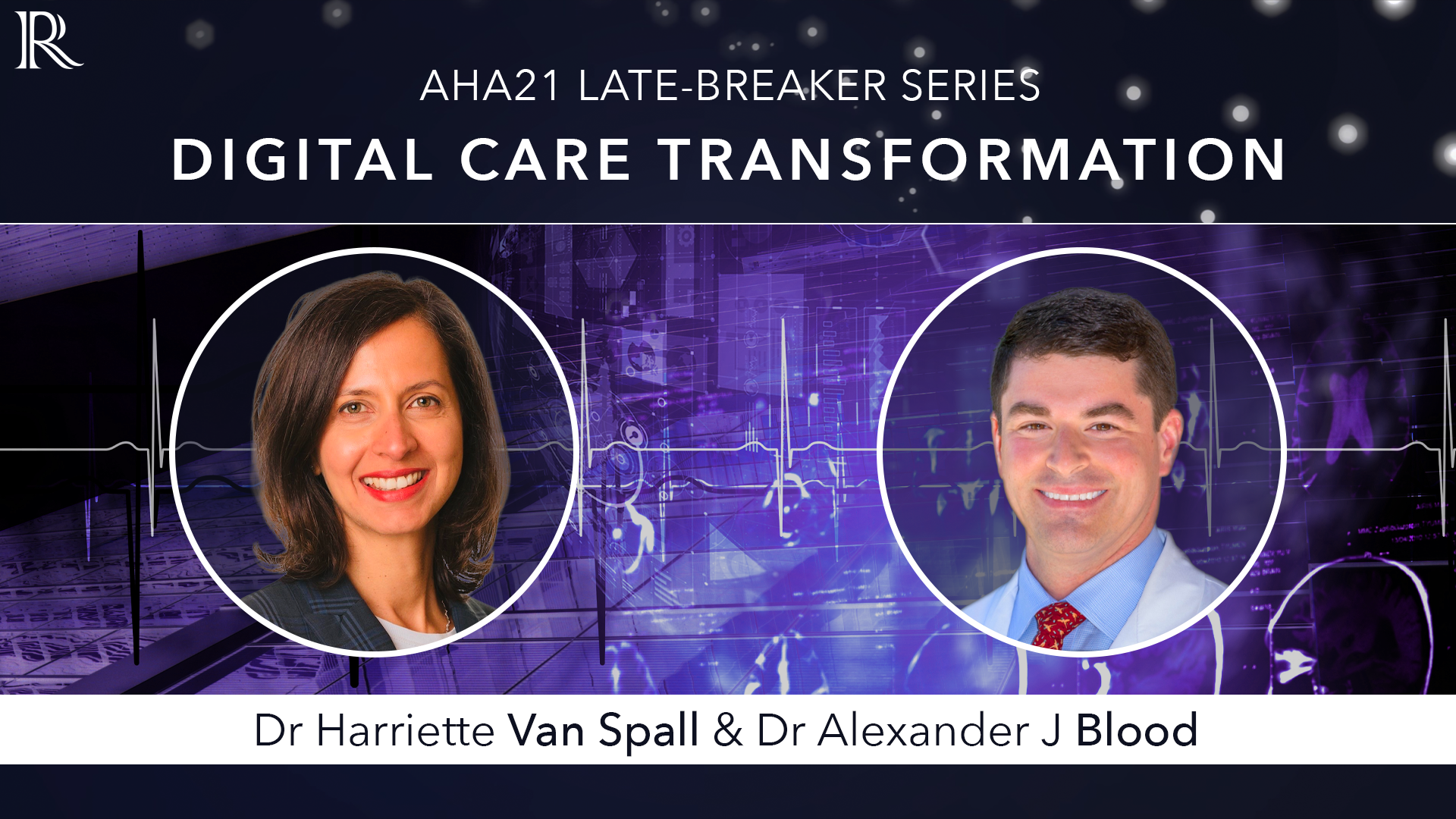 12m 12sPart 1 | Session 3 AHA 2021 Late-breaker Discussion: The Digital Care Transformation Study
12m 12sPart 1 | Session 3 AHA 2021 Late-breaker Discussion: The Digital Care Transformation Study
-
 5m 28sPart 3 | Session 1 Population Strategies for the Management of Hypertension
5m 28sPart 3 | Session 1 Population Strategies for the Management of Hypertension -
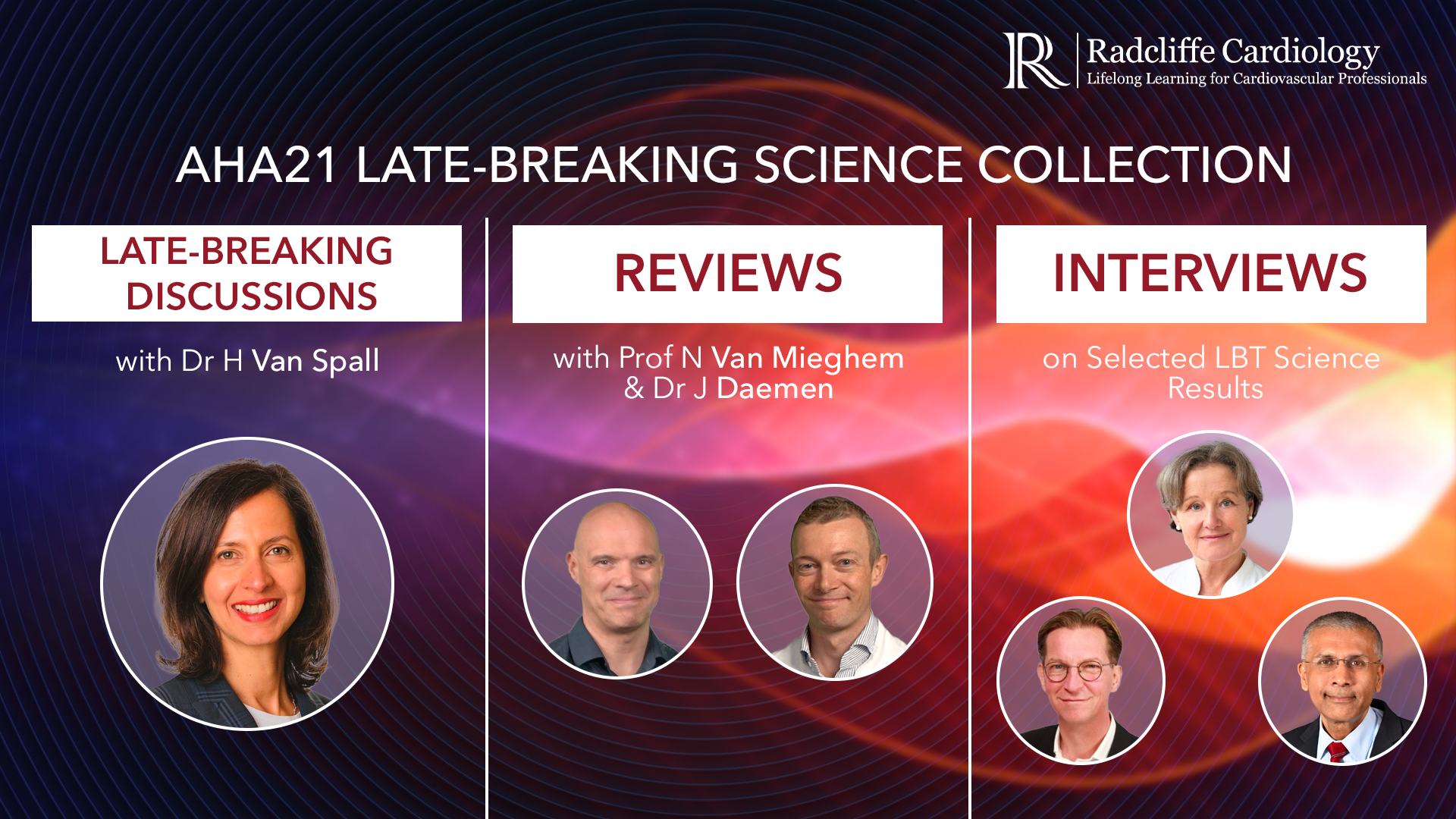 5m 41sPart 3 | Session 2 ROSE: CETPi Lowers LDL-C in Patients Taking High Intensity Statins
5m 41sPart 3 | Session 2 ROSE: CETPi Lowers LDL-C in Patients Taking High Intensity Statins -
 7m 58s
7m 58s -
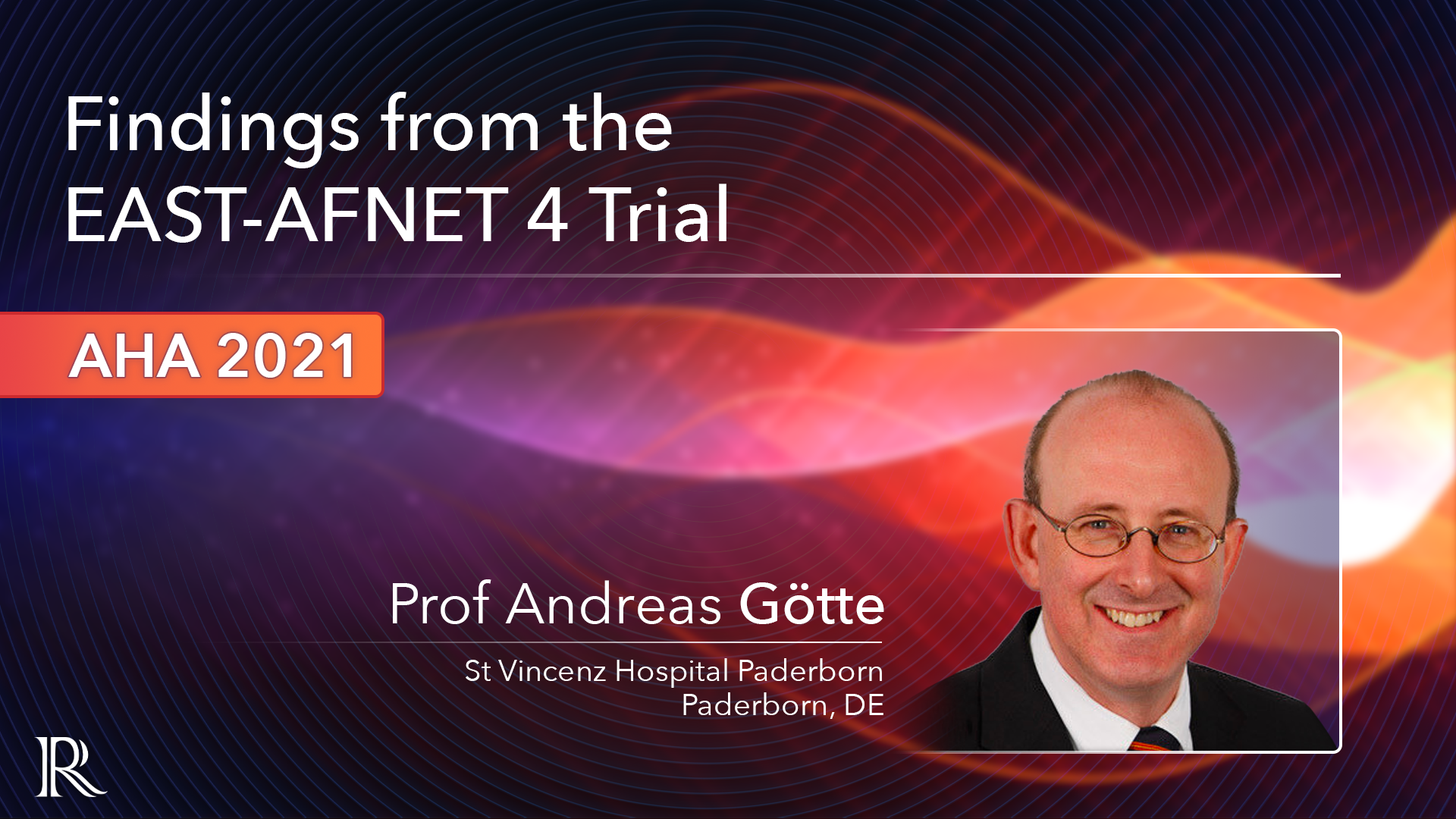 6m 56sPart 3 | Session 4 EAST-AFNET 4: Early Rhythm Control Was Consistent in AF Patterns
6m 56sPart 3 | Session 4 EAST-AFNET 4: Early Rhythm Control Was Consistent in AF Patterns -
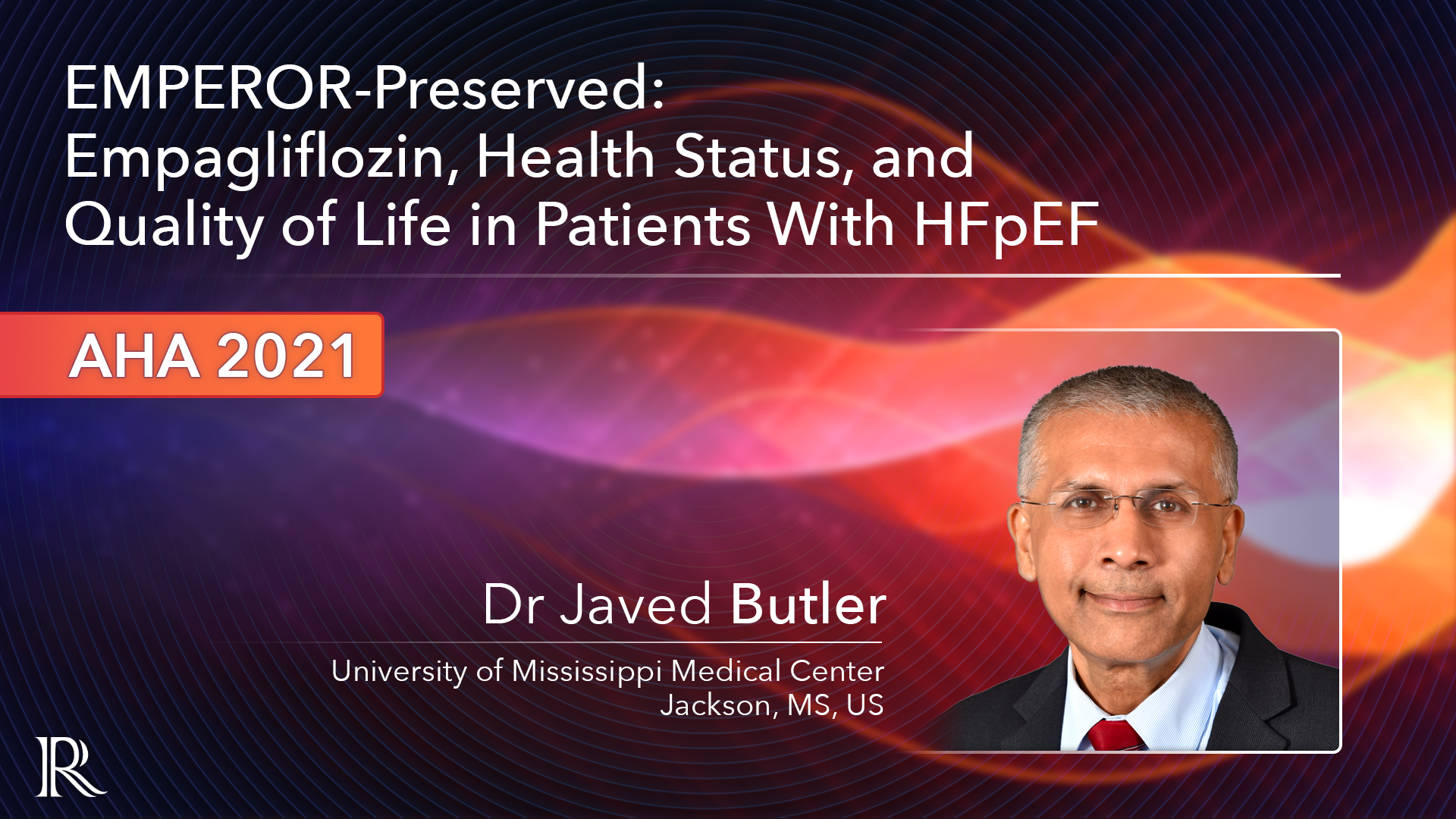 6m 35sPart 3 | Session 5 EMPEROR-Preserved: Empagliflozin, Health Status, & QoL in Patients With HFp
6m 35sPart 3 | Session 5 EMPEROR-Preserved: Empagliflozin, Health Status, & QoL in Patients With HFp -
 10m 20s
10m 20s -
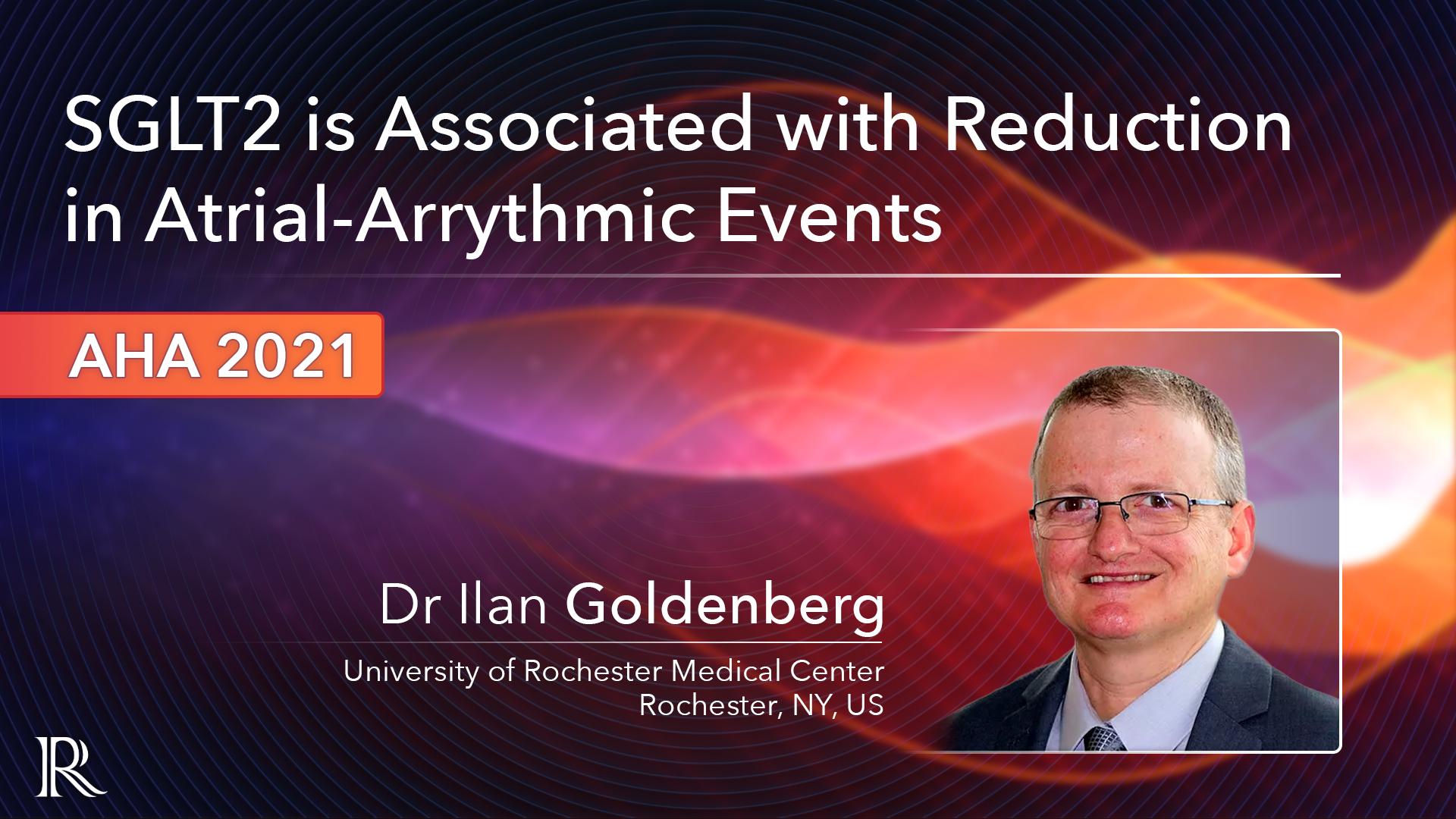 4m 26sPart 3 | Session 7 SGLT2 is Associated with Reduction in Atrial-Arrythmic Events
4m 26sPart 3 | Session 7 SGLT2 is Associated with Reduction in Atrial-Arrythmic Events -
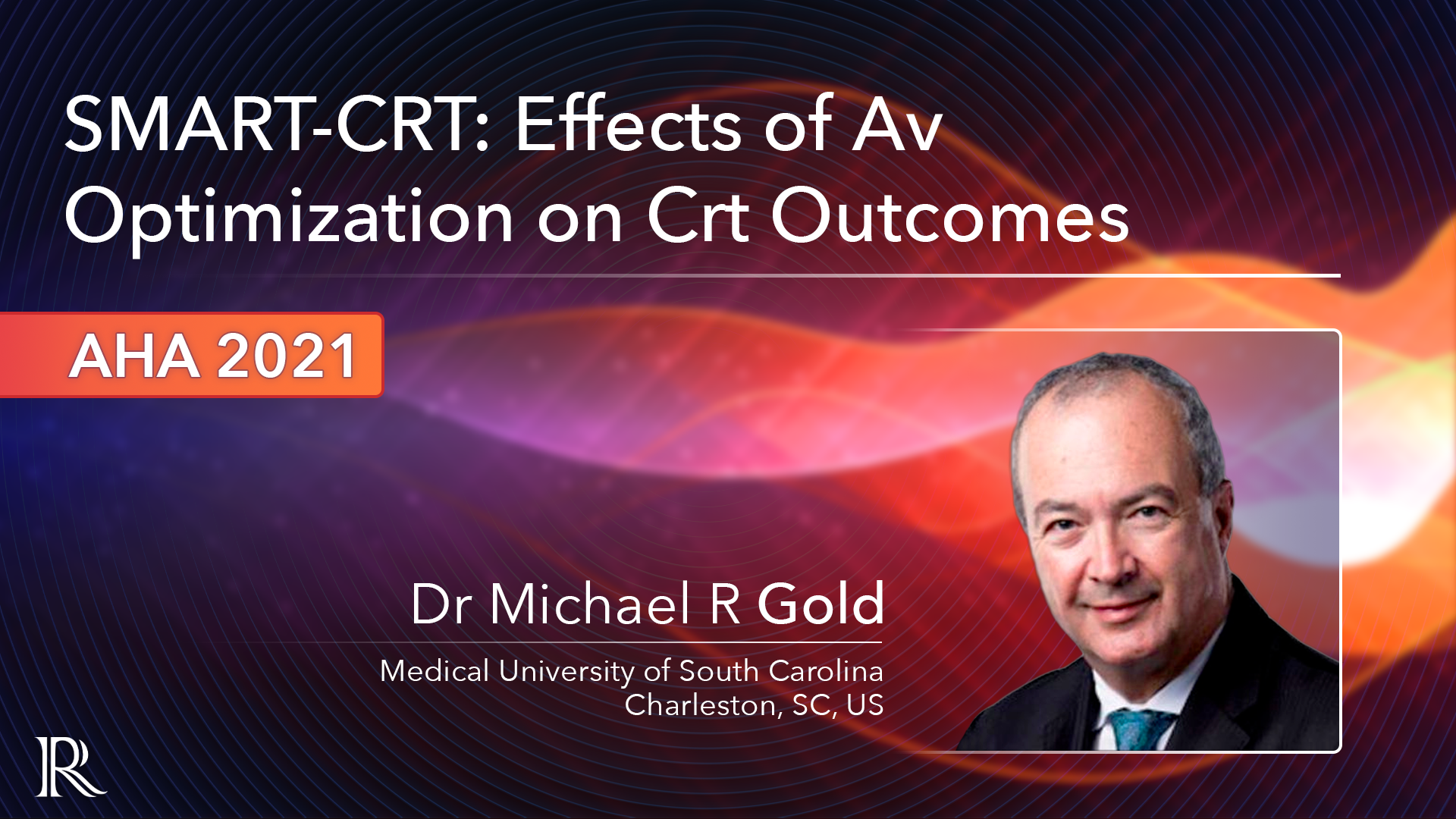 8m 26sPart 3 | Session 8 SMART-CRT: Effects of AV Optimization on CRT Outcomes
8m 26sPart 3 | Session 8 SMART-CRT: Effects of AV Optimization on CRT Outcomes -
 10m 10s
10m 10s -
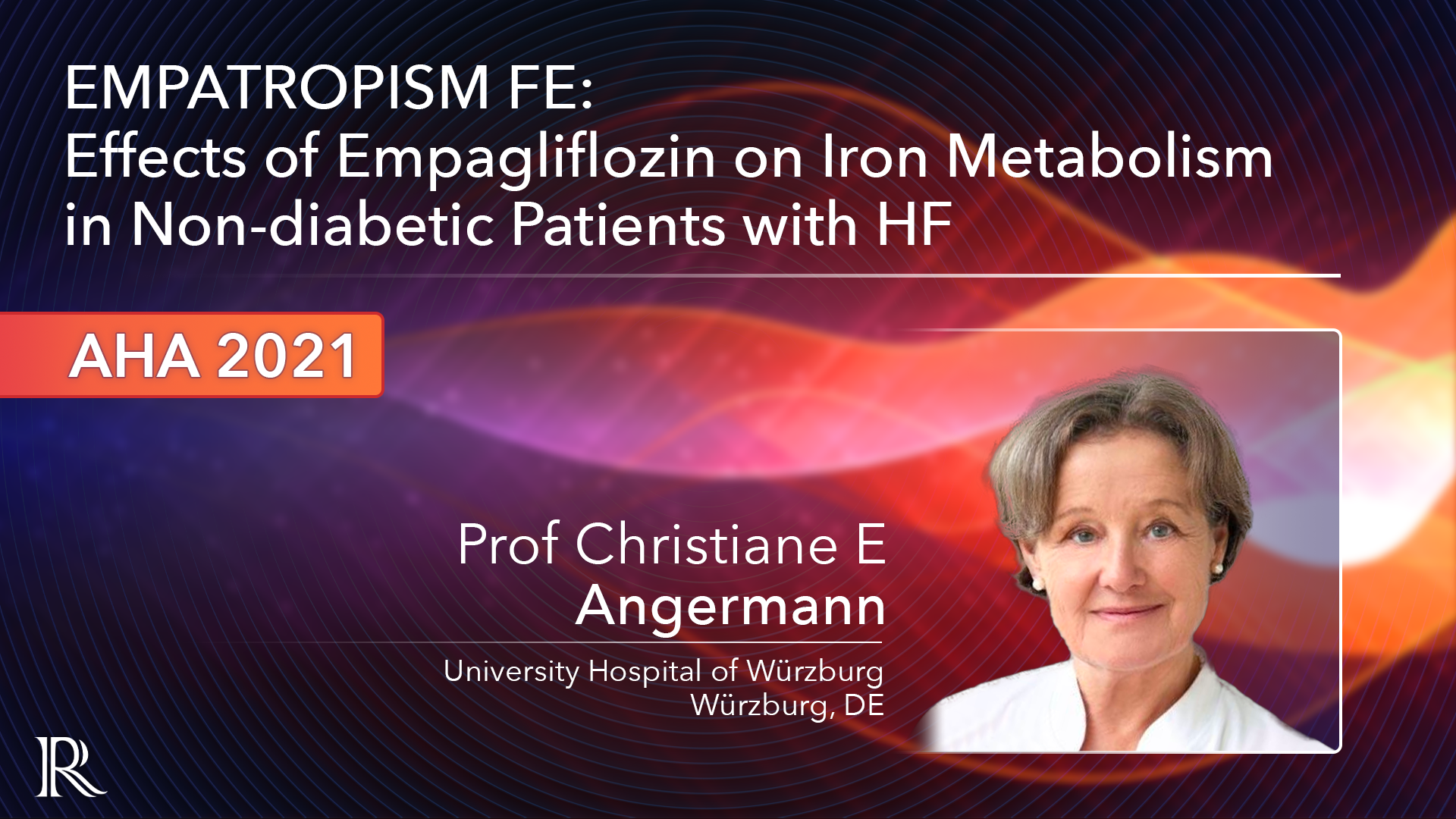 22m 15s
22m 15s -
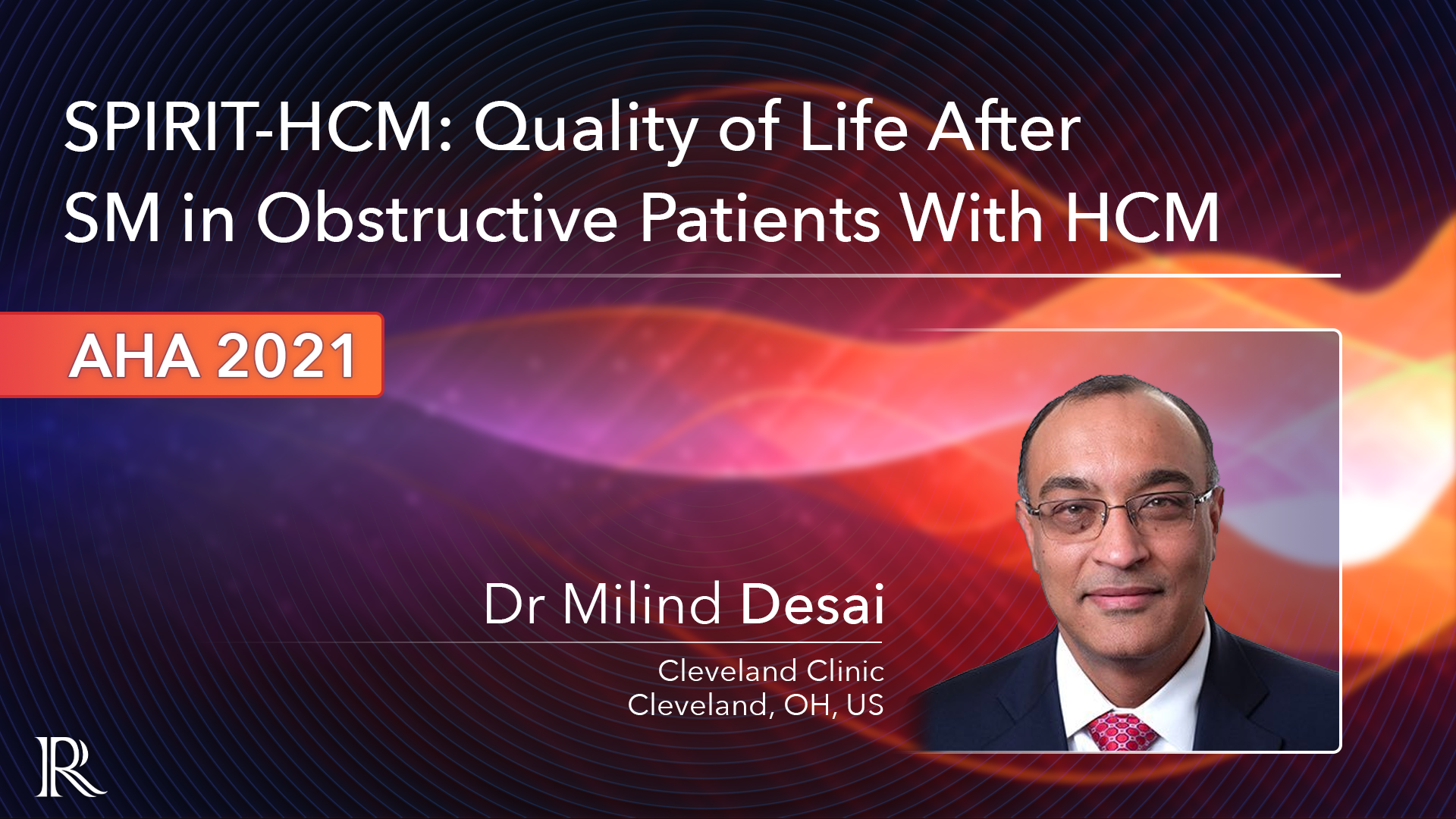 11m 55sPart 3 | Session 11 SPIRIT-HCM: Quality of Life After SM in Obstructive Patients With HCM
11m 55sPart 3 | Session 11 SPIRIT-HCM: Quality of Life After SM in Obstructive Patients With HCM
Overview
Our regular review series View from the Thoraxcenter hosted by Prof Nicolas Van Mieghem and Dr Joost Daemen provide a concise and insightful preview of the late-breaking science presented at AHA Scientific Sessions 2021.
For a deep-dive, watch Dr Harriette Van Spall's Late-breaking Discussion series on highly expected trials with principal investigators.
Short, accessible Expert Interviews will be available conducted with select faculty focusing on the results, applicability, and impact on future research.
More from this programme
Part 1
Late-breaker Discussion Series
Part 2
View from the Thoraxcenter: Preview of the Late-Breaking Trials
Part 3
Expert Interviews
Faculty Biographies

Harriette Van Spall
Associate Professor of Medicine, Director of E-Health and Virtual Care
Dr Harriette Van Spall is an Associate Professor of Medicine and cardiologist and serves as Director of E-Health at McMaster University, Canada. She completed her medical and postgraduate clinical training at the University of Toronto and earned a Master of Public Health degree at Harvard University, US. Dr Van Spall is a Canadian Institutes of Health Research-funded clinical trialist and researcher with a focus on heart failure, health services, and health disparities.
She has garnered more than $4 million in research funding, has won several research awards, and has published her work in high-impact medical journals. She is an invited speaker, media correspondent, and editorial board member active in peer review at several high-impact medications journals and grant funding agencies, including Canadian Institutes of Health Research and Heart and Stroke Foundation of Canada.
Dr Van Spall is an Editorial Board…

Adriaan Voors
Professor of Cardiology
Prof Adriaan Voors is a Professor of Cardiology at University Medical Center Groningen, Groningen, NL.
In 2007, he became Established Clinical Investigator of the Netherlands Heart Foundation.
Prof Voors is an editorial board member of the European Journal of Heart Failure, Clinical Research in Cardiology, Cardiovascular Drugs and Therapy, the Journal of Cardiovascular Medicine, and Heart Failure Reviews.
Transcript
- Thank you, it's a pleasure to be here.
- Oh, it's my honour. It's such a delight to see you, although not in person. We would like to start off inviting you to tell us about the rationale for this trial.
- Yes, so, impulse was designed to not only look at the chronic phase but acute phase. So we have seen EMPEROR-Preserved, EMPEROR-reduced, DAPA-HF, all trials in the chronic heart failure world, both in HFrEF and HFpEF. Then we had SOLOIST of course, which was a more semi acute heart failure trial, partly in hospital, partly post discharge, but only in patients with diabetes. So we wanted to know two things, whether starting empagliflozin in hospital, in an acute heart failure hospitalisation would be beneficial by itself to give it during 90 days. But also is it safe to start a drug in a vulnerable patient with large volume shifts, hemodynamic changes? So those were the main two questions we address in the post.
- Fantastic. What were your key eligibility criteria?
- Yeah, so, so patients needed to be hospitalised for acute heart failure. I think the positive thing about this study is it wasn't all comers [Non Audiable]. So it included both patients with acute de novo. So the first presentation of heart failure was actually this hospitalisation, as well as patients with chronic heart failure, who'd be compensated. It was with patients both with and without diabetes. It was irrespective of whether they had a left ventricular ejection fraction below or above 40 or 50. All patients were eligible for the study. The only thing is that they needed to be stabilised in a way that they didn't have signs of hypotension, no active phase of dilators in the last six hours, no change in the loop diuretic in the last six hours and no IV inotropic drugs in the last 24 hours. And of course they needed to have elevated natriuretic peptides.
- Was the expectation that, empagliflozin might induce hemodynamic instability, one might proport that it might have actually improved some of the hemodynamics in patients with acute decompensated heart failure. What are your thoughts?
- Yeah. Great suggestion. So on the one, it's exactly what you're saying. On the one hand, there were concerns. I mean, here you are with a drug that that does well in a chronic situation. If we think back a long time ago at the consensus too when we gave an ACE inhibitor early after hospital admission, it didn't go that well. So on the one hand there's concerns to give a drug in a vulnerable phase, it's a risk. On the other hand, this drug actually could even provide more diarrhesis on top of loop diuretics. It could have other hemodynamic or metabolic improvements related to better outcomes. So it was exactly the reason why I'm saying it was both the intent to see whether it was safe on the one hand and efficacious on the other hand. So this was exactly the balance, as you described so well.
- What were the baseline characteristics? Tell us about the demographics of your patients.
- Yeah, so patients where mean was approximately 70 years, There was one third female. I know, not enough, should be at least 50-50. We both agree about this. But it was one third females. One third was acute de novo re de-compensated chronic. 46% was diabetic, and one third of the patients had an ejection fraction of above 40%. So it was still the majority was have HFrEF.
- And what were your key findings?
- So, the primary endpoint of the study was a clinical composite of a hierarchical composite of either death, a heart failure event or improvement in KCCQ total symptom score. And it was scored in as a win ratio. And the win ratio is, at first sight, might be complex, but it's actually very easy. The computer picks out one patient from the placebo group, one from the empagliflozin groups and starts comparing this patient. And at first looks at whether patients are still alive. If there's a death in one group, then obviously the other group is the winner. If there is a tie, it goes to the next level. And the next level is a heart failure event. And it looks whether or not there had been an occurrence of a heart failure event in one of the groups, and if so, the other group was the winner. And if there was a tie then in the end, it looked at the KCCQ total symptom score, compared both patients to each other and looked whether one of the patients had at least five points or more, improvement in the KCCQ total symptom score compared to the other one. So not compared to baseline, but compared to the other one. And then in the end, you can see that either empagliflozin is the winner. There could be a tie still, or the placebo is the winner. And what we saw from the primary endpoint that in 53.9 of the cases, empagliflozin was the winner in 39.7% it was placebo that was the winner. And in 6% there was a tie. So if you make a simple calculation in quotation to that, you can see that the win ratio was 1.36 with a P-value of 0.0054, which means that patients on empagliflozin were 36% more likely to obtain a clinical benefit from empagliflozin.
- Right. And then going through each of the component outcomes, I must say that I really loved the thought that went into this analytic plan. And I know there's been a lot of online discussion, but I thought that the hierarchy was so clinically relevant and you included important end points that may not have necessarily been sensitive to the intervention, but were important. And you also set a threshold for the difference in KCCQE, which is much larger. It's the minimally clinically important difference, but much larger than differences seen in prior trials that tested SGLT2 inhibitors in the heart failure population. And of course the win ratio allowed for inclusion of all of these relevant endpoints in a single primary endpoint. How do you set the alpha for each? What sort of determines that decision? Did you have stakeholders at the table? A variety of voices? How do you make that decision?
- Well, that was not an easy one and there's obviously more options, similar options. The thing is we, first of all, we wanted to have a relevant clinical endpoint, so it needs to be clinically meaningful. And of course, one of the comparators of our study was PIONEER, which was a very nice study, similar size, maybe even slightly larger, but primarily looking at anti proBNP And so this is not what we wanted. We wanted the clinical relevant endpoint. And then of course we had a big discussion of the components of the endpoint, especially the last one, because should it be a change in anti proBNP as the closing one, but again, we wanted to have clinically relevant, meaningful end point. And if you look at patients with acute heart failure, what's important for them? First of all, that they stay alive, that they don't get re-hospitalized, and that they improve their symptoms. I mean, this is what it's all about. So that's made us think about the components now more that the statistical background of this, is quite complex, also to calculate the alpha with simulations, and there's lots of simulations. You come up with with the win ratio, but we could've, might've chosen other ones, but because of the clinical background and the clinical meaning of the endpoint and the hierarchy that we chose, in combination with let's, let's be honest, a limited sample size of 530 patients. We came up with this one, but having said this, it's important to realise that, because sometimes people are saying it's completely driven by the KCCQ. It is not. the win ratio is driven both by an improvement in mortality or improvement in survival, so to say. A reduction in heart failure re-hospitalizations, as well as an improvement in KCCQ. So it's driven by the three of them, which makes this, I think, the outcome more powerful than when it's completely driven by KCCQ.
- Can you comment quickly on the relative proportion of heart failure events that were due to worsening heart failure versus heart failure hospitalizations?
- Great, great question. So I cannot answer yet. We are working on several secondary papers at the moment. So the primary paper is fortunately accepted in natural medicine. So we work on secondary papers and one of the papers isn't event paper, and we're going to describe in detail about the number of events. What were the breaking down. Upfront, I'm careful to speculate too much on this because with the 530 patients, you get really limited numbers, but still we're working on this, it's upcoming.
- I thought that your, you squeezed as much as you could from the small sample size. And people may not realise the incredible amount of work that goes into planning a trial. And I just wanted to say the methods paper was such a joy to read. And for the sake of the clinician, however, I won't linger too much on the statistics. We'll move on to the protocol that addressed any declines in GFR. So many clinicians are concerned about changes in GFR in patients who are started on ROS inhibitors on SGLT2 inhibitors, even though evidence demonstrates that these don't correlate with renal endpoints or overall endpoints, but was there any algorithm that you followed for those patients who might've had a large drop in GFR? Were there any thresholds that you used before you held therapy or ceased therapy?
- So this was completely investigator or physician driven. So they also reported their acute renal failure. So we have, the valid endpoint that is most often used with a 40 to 50% reduction in the eGFR or going down below 15 or dialysis, which was oddly occurring. It was, I think, in three patients in the placebo group and only one in the empagliflozin group, but we also have the self-reported acute renal failure, which occurred in 7% in the empagliflozin group versus 12% in the placebo group. And I completely agree with you that this is, the acute renal function events is completely different from the intrinsic effect of the drug to have an initial, slight drop in eGFRs of approximately two points. I think it's great that you emphasise this discrimination between those. You have the acute renal events, some things often go wrong. It might be a hemodynamic deterioration or other things that's happening. And there is the intrinsic effect of the drug, now the intrinsic effect of the drug is a slight drop in the eGFR, which recovers after 30 days or 90 days, and it gets back to normal again. But acute renal failure is occurring less often in patients on the SGLT2 inhibitors and and empagliflozin in this situation. So I agree we should, we should differently look at both aspects of renal function changes.
- Right. And a guide to what clinicians should do at the point of care when their acute changes would be quite useful because most trials present baseline GFR, but not sort of any algorithmic driven instructions or guides for clinicians, which I think unfortunately, results in a lot of inappropriate cessation of therapy. Overall, the safety profile was excellent, with fewer, in fact, adverse events in the intervention group than the comparator group. I don't know if you want to jump in and talk about the genital infections.
- Yes. There were three cases of genital infections in the empagliflozin group versus one in the placebo group. So, very low incidents of this event. Still, I mean, in clinical practice and nowadays in the chronic situation, I already use it a lot, according to the guidelines. I always tell people, still I notify them that this might happen. Why? Because if patients get a genital infection, they don't make the link between the drug that they just received. So it's always good to pay attention to this, but it's something that occurs slightly more often in the SGLT2 inhibitor group, but it was very rare in our situation. It's mycotic infections too usually, it's easy to treat. I have already a few patients that had it, they wanted to continue with the drug because they felt better. And I said, well, you better stop for a while because you have to treat your infection first. But it was well, it's easy to treat.
- Yes. And do you stop it, for the purpose of the trial, how long did you stop it for?
- Well, in my clinical practice I, so far I stopped it, I didn't restart it. In the trial, it was also permanent discontinuation.
- I see. Okay. Okay. Well, let me congratulate you on an impeccable trial that got such great buzz at AHA 21. It's been a pleasure talking to you today and also collaborating with you through the year. I wish you well, I'm going to look for this primary publication and all the secondary papers that come out and I can't wait to 'til our paths cross again, Adriaan. Thank you so much for joining me this morning.
- Thank you Harriette for a very nice interview. Thank you.





